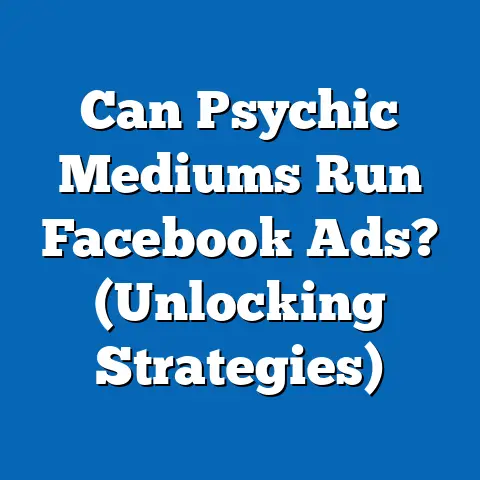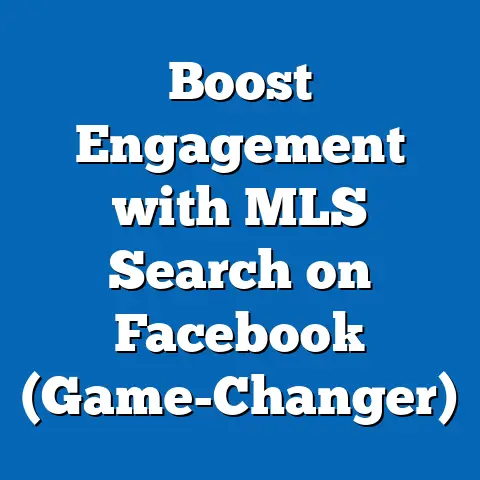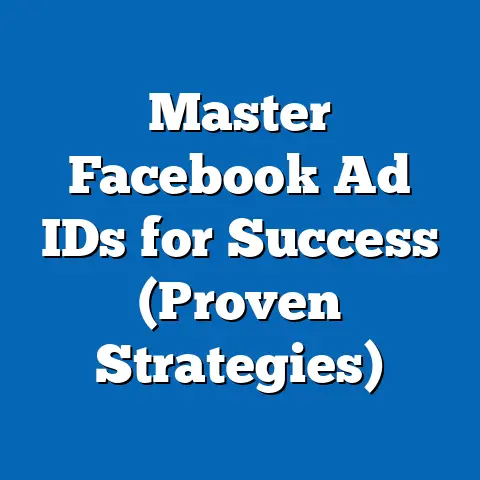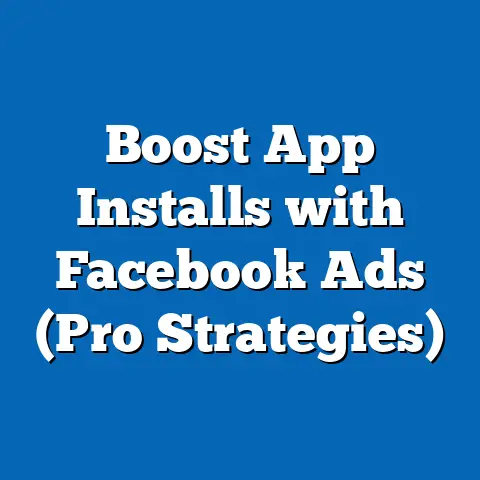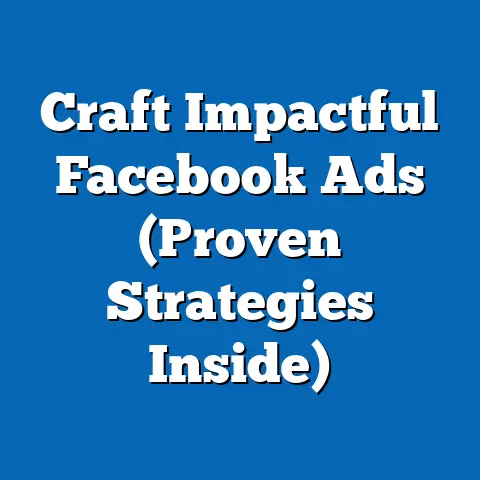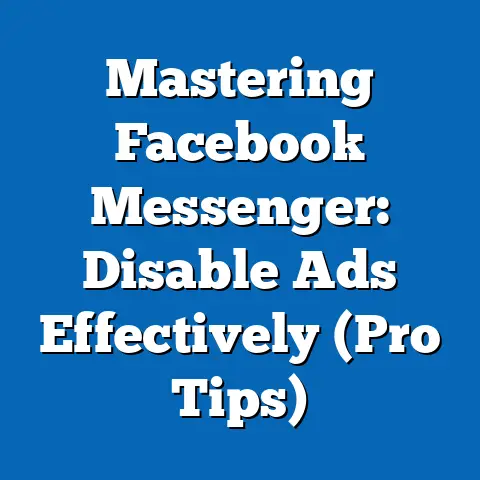Why Is My Facebook All Ads? (Expert Insights Unveiled)
In recent years, users across the globe, from bustling urban centers in the United States to rural communities in Southeast Asia, have increasingly noticed a shift in their Facebook experience: their feeds seem to be dominated by advertisements. Whether you’re scrolling through posts in New York or Manila, the prevalence of ads over personal content from friends and family has become a common grievance. This phenomenon isn’t just a random occurrence but a reflection of deliberate platform strategies, evolving user behaviors, and targeted advertising technologies.
The Rise of Ads on Facebook: A Global and Regional Perspective
Facebook, now under the umbrella of Meta, boasts over 2.9 billion monthly active users worldwide as of 2023, according to Meta’s Q2 2023 earnings report. This staggering user base makes it one of the most influential platforms for advertisers seeking to reach diverse audiences. However, the ad experience varies significantly by region, influenced by internet penetration, user demographics, and local advertising markets.
In North America, particularly the United States, users report a higher density of ads compared to other regions, with a 2022 survey by Pew Research Center indicating that 68% of U.S. Facebook users feel their feed is “mostly ads” rather than personal content. This perception aligns with the region’s high advertising revenue contribution—Meta reported that North America accounted for 41% of its $31.5 billion in ad revenue in Q2 2023, despite representing only 8% of its global user base. The high purchasing power of American users makes them prime targets for advertisers, leading to more frequent and tailored ad placements.
Contrast this with regions like Southeast Asia, where internet adoption is rapidly growing but ad saturation feels less overwhelming to users. In countries like Indonesia and the Philippines, which together contribute over 200 million monthly active users (Statista, 2023), only 52% of surveyed users reported an ad-heavy feed, per a 2023 regional study by DataReportal. This discrepancy may stem from lower advertiser competition and a focus on organic content in markets where social media serves as a primary communication tool rather than a commercial space.
Demographically, age plays a significant role in ad exposure across regions. Younger users (18-24) globally are more likely to encounter ads, with Meta’s transparency tools showing that this group sees an average of 1 ad for every 3 organic posts. Older users (45+), particularly in North America and Europe, report a slightly lower ratio of 1 ad per 5 posts, possibly due to less engagement with commercial content and more focus on family or community updates (Pew Research, 2022).
These regional and demographic trends highlight a tailored approach by Meta to maximize ad revenue while balancing user experience. But why has the platform shifted so heavily toward ads in the first place? Let’s explore the underlying business model driving this change.
Facebook’s Business Model: Ads as the Revenue Engine
At its core, Facebook is an advertising platform, not just a social network. In 2022, 97% of Meta’s total revenue—amounting to $116.6 billion—came from advertising, according to its annual financial report. This reliance on ad income has intensified over the years as the company seeks to sustain growth amid rising operational costs and regulatory pressures.
Historically, when Facebook launched in 2004, it was ad-free, focusing on connecting users through organic content. Ads were introduced in 2007 with the launch of “Facebook Ads,” but they remained a minor part of the experience until the platform’s IPO in 2012. Post-IPO, Meta’s ad revenue grew exponentially, from $4.3 billion in 2012 to over $114 billion by 2021 (Statista, 2023), reflecting a strategic pivot to monetize its vast user base more aggressively.
This shift is evident in the increasing ad load per user. A 2019 study by eMarketer found that the average U.S. user saw about 6-7 ads per day on their feed. By 2023, this number had risen to 12-15 ads daily, based on user reports and Meta’s transparency data. The company justifies this increase by citing the need to fund platform maintenance, innovation, and compliance with privacy laws like the EU’s GDPR and California’s CCPA, which have reduced the effectiveness of targeted ads and necessitated higher ad volumes to maintain revenue.
Meta’s business model also relies on small and medium-sized businesses (SMBs), which account for over 70% of its advertising clients, per a 2022 Meta report. These SMBs, numbering over 10 million globally, often have smaller budgets but collectively drive significant ad volume, further crowding user feeds. For users, this means more frequent interruptions, especially in markets like the U.S. and India, where SMB advertising is particularly active.
Algorithmic Evolution: Prioritizing Ads Over Organic Content
The backbone of Facebook’s ad-heavy experience lies in its algorithm, known as the News Feed algorithm, which determines what content users see. Initially designed to prioritize posts from friends and family based on engagement (likes, comments, shares), the algorithm has undergone multiple updates since 2016 to balance paid and organic content. These changes often favor advertisers, as Meta seeks to maximize revenue per user.
In 2018, Meta announced a major algorithm overhaul, promising to prioritize “meaningful interactions” over passive content consumption. However, a 2021 analysis by The Markup revealed that posts from advertisers still received disproportionate visibility, with paid content appearing in feeds up to 30% more often than organic posts from followed pages or friends. This shift is partly due to declining organic reach for pages—businesses and creators now see their unpaid posts reach only 5.2% of their followers on average, down from 16% in 2012 (Hootsuite, 2022).
The algorithm also uses machine learning to predict user behavior, serving ads based on past interactions, search history, and even off-platform activity tracked through tools like the Meta Pixel. According to a 2023 report by the Electronic Frontier Foundation (EFF), over 90% of websites embed such tracking tools, allowing Meta to build detailed user profiles despite privacy pushback. For users, this means ads that feel eerily relevant—but also more frequent, as the algorithm slots them into every scroll.
Demographic targeting further amplifies ad exposure. For instance, women aged 25-34 in urban U.S. areas report seeing more lifestyle and beauty ads (up to 18 per day), while men in the same age bracket encounter more tech and gaming promotions, per a 2022 Nielsen study. These patterns reflect advertisers’ focus on high-value demographics, but they also contribute to the perception of an ad-saturated feed.
User Behavior and Engagement: Feeding the Ad Machine
While Meta’s strategies play a central role, user behavior also contributes to the ad-heavy experience. The average user spends 33 minutes daily on Facebook, according to a 2023 DataReportal study, providing ample opportunity for ad exposure. Engagement metrics—likes, clicks, and time spent on posts—inform the algorithm, often prioritizing content (including ads) that keeps users on the platform longer.
Interestingly, users who engage less with friends’ posts or group content are more likely to see ads, as the algorithm fills the “content gap” with paid placements. A 2021 study by the University of Southern California found that users who primarily scroll without interacting see up to 40% more ads than active engagers. This suggests that passive usage, common among older demographics (55+), may inadvertently increase ad frequency.
Regionally, engagement patterns vary. In India, where over 340 million users actively post and comment (Statista, 2023), ad density feels lower due to high organic content creation. Conversely, in the U.S., where 29% of users report using Facebook mainly for news or entertainment rather than social connection (Pew Research, 2022), the algorithm leans on ads to retain attention, exacerbating the issue.
Privacy Regulations and Their Impact on Ad Volume
Privacy laws have reshaped how Meta delivers ads, often leading to increased ad frequency to offset revenue losses. The introduction of the General Data Protection Regulation (GDPR) in Europe in 2018 and Apple’s App Tracking Transparency (ATT) feature in 2021 restricted Meta’s ability to track users across apps and websites. Meta estimated a $10 billion revenue loss in 2022 due to ATT alone, per its annual report, as advertisers struggled to target effectively without granular data.
To compensate, Meta has increased ad impressions per user in regions like Europe, where GDPR compliance reduced targeting precision. A 2022 study by the European Digital Media Observatory found that EU users saw a 25% uptick in ad frequency post-GDPR compared to pre-2018 levels. Similarly, in the U.S., where privacy laws vary by state, Meta has shifted to broader, less personalized ads, requiring higher volume to achieve similar conversion rates.
For users, this means more ads that may feel less relevant. A 2023 survey by YouGov revealed that 62% of EU Facebook users found ads “intrusive” or “irrelevant” post-privacy updates, compared to 48% in 2017. This dissatisfaction underscores a trade-off: privacy gains come at the cost of a more cluttered feed.
Historical Trends vs. Current Data: A Growing Ad Load
Comparing historical trends with current data reveals a clear trajectory toward ad dominance. In 2015, Meta reported an average of 1 ad per 7 posts in user feeds, based on internal metrics shared during earnings calls. By 2023, this ratio tightened to 1 ad per 4 posts globally, with some high-revenue markets like the U.S. seeing ratios as low as 1:3 (Meta Transparency Center, 2023).
This trend correlates with declining organic engagement. A 2019 report by Buffer noted that organic post reach for pages dropped by 50% between 2016 and 2019, pushing businesses to rely on paid ads to maintain visibility. Today, with over 60 million active business pages on Facebook (Meta, 2023), competition for ad space has intensified, further crowding user feeds.
User sentiment has also shifted. In 2015, only 34% of U.S. users reported feeling overwhelmed by ads on social media, per Pew Research. By 2023, this figure climbed to 71%, reflecting growing frustration with the platform’s commercialization. Despite this, user retention remains high—Meta reported only a 2% dip in daily active users in North America from 2022 to 2023—suggesting that ads, while annoying, haven’t driven mass exodus yet.
Demographic Patterns: Who Sees the Most Ads?
Demographic differences in ad exposure are stark and often tied to perceived purchasing power. As mentioned earlier, younger users (18-34) encounter more ads, with Meta’s data showing they represent 54% of total ad impressions despite being 38% of the user base (2023). This focus stems from their higher engagement rates and likelihood to click on ads—eMarketer reports that Gen Z and Millennials account for 60% of social media ad conversions.
Gender differences also emerge. Women globally see 15% more ads than men, often related to fashion, beauty, and family products, per a 2022 Nielsen analysis. In contrast, men are targeted more with automotive and tech ads, though at a lower frequency. These patterns reflect advertiser biases and market segmentation strategies.
Geographic and income disparities further shape ad exposure. Users in high-income countries like the U.S., Canada, and Australia see up to 20% more ads than those in low-income regions like Sub-Saharan Africa, where internet access and advertiser interest are lower (DataReportal, 2023). Within countries, urban users encounter more ads than rural ones due to better connectivity and higher consumer spending—urban U.S. users report seeing 14 ads daily on average, compared to 10 for rural users (Pew Research, 2022).
Data Visualization Description: Mapping Ad Density by Region
To illustrate regional differences, imagine a world map heatmap where darker shades represent higher ad frequency per user. North America and Western Europe would appear darkest, reflecting ad ratios of 1:3 and high revenue per user ($50+ annually, per Meta 2023 data). Southeast Asia and Latin America would show medium shades, with ratios closer to 1:5 and revenue per user around $10-15. Africa, with limited advertiser focus, would be lightest, averaging 1:7 and under $5 per user in ad revenue.
A bar chart could further break down ad exposure by age group, showing 18-24-year-olds at the top with 15 daily ads, tapering to 8 for those 55+. These visuals would underscore how Meta tailors ad loads based on market value and user behavior, offering readers a clear snapshot of global disparities.
Broader Implications and Future Trends
Privacy regulations will also shape the future. With more countries adopting GDPR-like laws, Meta may double down on ad volume to offset targeting limitations, potentially alienating users further. A 2023 YouGov poll found that 58% of global users would consider leaving Facebook if ads become “unbearable,” hinting at a tipping point.
Alternative revenue models, like subscriptions, offer a potential counterbalance. Meta’s 2023 launch of a $9.99/month ad-free option in Europe (in response to regulatory pressure) suggests a possible pivot, though uptake remains low at under 1% of users (Meta Q3 2023 report). For most, the free, ad-supported model will persist, ensuring feeds remain cluttered.
Ultimately, the question “Why is my Facebook all ads?” boils down to a deliberate strategy balancing profit with user tolerance. As algorithms refine and advertiser demand grows, users must weigh the convenience of a free platform against the cost of constant commercial interruptions. The future of social media may hinge on finding equilibrium—or risking user fatigue in pursuit of revenue.

